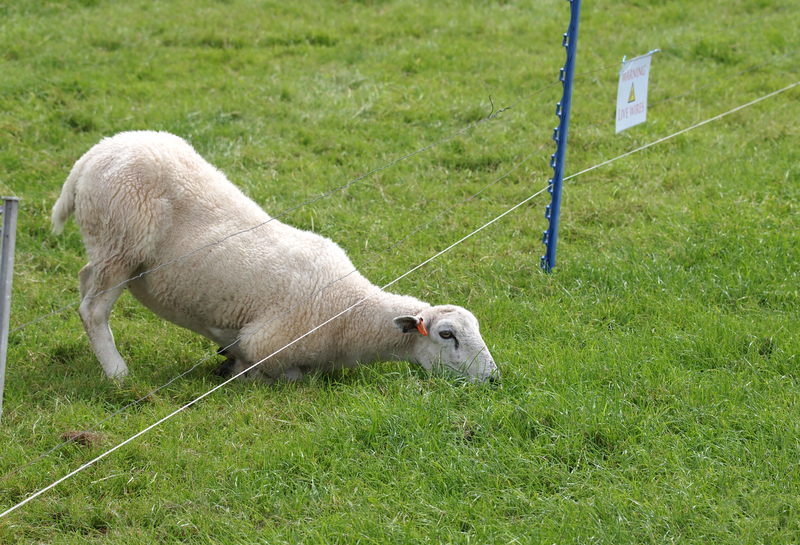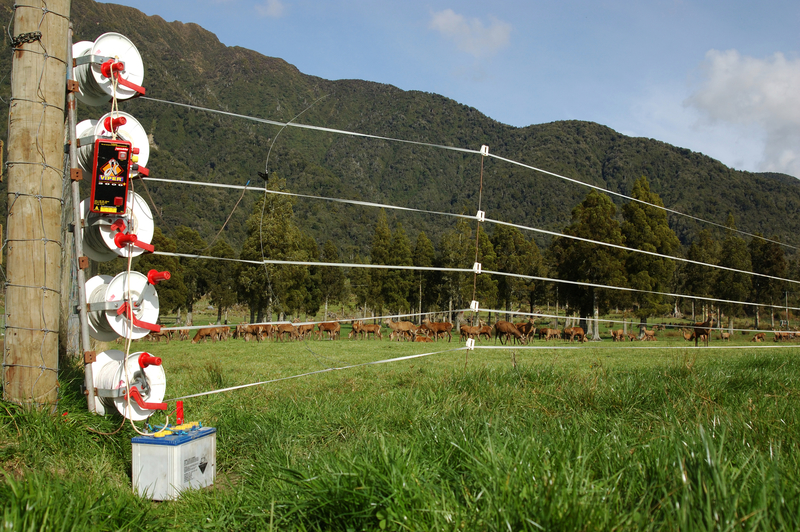19 tips for better fencing

Photos: Dreamstime
Doing some fencing? Here’s 19 tips you might find useful.
Words: Nadene Hall
Wire mesh fences are great for sheep and goats. Although young kids or small lambs may squeeze through them, they usually don’t go too far from their mothers.
Mesh isn’t a good option if you have horses, who risk catching a hoof and being trapped, doing severe damage to their lower leg. If you do have wire mesh fences, have an electrified outrigger hanging inside the fenceline so a horse can’t get right up to it.
You may also need an electric wire at the half-way mark to stop itchy goats or sheep using it to scratch themselves – this eventually stretches the mesh making it easier for animals to wiggle under it or over it.
There’s an old saying – if you can see through it or blow smoke through it won’t hold a goat. While this is a slight exaggeration, goats are often the ultimate test for any fence, squeezing their way under or through wire and wooden fences. Wire mesh is the answer but you may still need a couple of hot wires to stop animals trying to go over or under it. A five-wire fence can be a more economical option for sheep and goats, if each wire is electrified.
Many farm fences still contain barb wire, and it’s worth replacing it. Barbs tear flesh easily – both animal and human – and can cause a lot of damage. It’s also dangerous for children who may grab at a wire for support. You also can’t electrify it as most of the energy is lost through the barbs.
If you’re putting in a fence that needs to curve, reduce the post spacing in the curve, to prevent the tensioned wires from pulling the posts out or over.
Sheep and goats have a natural insulation layer that protect them from some or all of the shock of an electric fence. Horses wearing covers can also learn they don’t have to be as respectful to an electric fence because the fabric absorbs some of the shock when they lean or push on it. Outriggers holding an electric wire are a good option.
Make sure your electric fencing unit is well-grounded, with at least 3 grounding poles sunk deep into damp soil (the drier it gets, the less efficient the grounding). Most animals can sense when an electric fence is shorting or has stopped working completely. It may be they can hear the pulse but most seem to sense it through the fine hairs on their noses (why you often see animals ‘sniffing’ an electric fence).
When you’re erecting a fence, a post rammer on the back of a tractor makes the job much easier. You can use a post-hole borer to create a post-hole but a post that is driven into the ground has about five times the holding strength of one put in by hand. It’s best to hire a contractor as tractor-mounted rammers have a nasty nickname – “the widow-maker” – for a reason. The relatively small-looking weight ramming a post in can weigh hundreds of kilos. It should be treated as a dangerous tool at all times.
If you’re boring (or ramming) posts, damp soil makes the job significantly easier.

Photos: Dreamstime
Fencing around areas prone to flooding can be a challenge. One or two-wire electric fences are less likely to collect flood debris or be swept away and are easier to repair after a flood has been through. Mesh fences act like a big sieve and can disappear under the weight of debris.Don’t use barb wire or battens if an area is prone to flooding or they too will become debris collectors.
If you do install a wire fence, staple them on the downstream side so they pop out if put under pressure, to avoid snapping the wires.
If you find your stock are challenging electrified gates, have a look at the ground around it. Animals standing on grass get a much greater electrical shock than those standing on dirt so you may need to create a second gate or hoe the ground up and put down some grass seed.
Try to avoid making paddocks long and narrow. Research shows most animals will undergraze areas furthest away from a water trough.
Gates should be in a corner so it is easy to herd stock towards them.
If you’re adding a raceway, make sure it’s wide enough for stock to walk down it without being crowded. By making a race two gates wide (approximately 7m) you also ensure large tractors or trucks can easily move through if required. If you intend to use vehicles down a race in all weather, scrape back the topsoil and add a layer of base gravel to stop vehicles from sinking.
While you might want newly created paddocks to be symmetrical this is usually unrealistic if your property is anything other than flat terrain. Make a plan of your property or get a satellite photo of it:
– Google Maps is a good option, and also includes a handy ruler (click on a starting point then right click and choose ‘measure distance);
– Use the Land Information NZ (LINZ) Basemaps – satellite images are often a few years out of date but tend to be very high resolution (often much better than Google), with 3d options that show land contours;
– Get a copy from your council, usually a free or very low-cost service.
Use the map to plot new fences and work out accurate lengths so you can estimate costs more accurately. You can also work out how to avoid areas that are difficult to fences such as steep banks or stony areas.
Posts on flat land are usually 3-4m apart at most – this supports the fence and helps it keep its integrity when it comes under pressure, say when an animal leans on it. As land gets steeper posts will need to be closer together so the wire follows the topography of the land.
While a wire fence should always be kept tightened, you should think of it as being like a rubber band – if something runs into it you want the fence to have some give in it rather than being so tight it just slices like a grater.
If you have horses don’t create paddocks with sharp corners. A more dominant horse can trap a herd mate in a corner. If you are putting horses in a paddock fenced with wire consider using white electric fence tape on an outrigger or a board along the top so it is visible. A panicking horse may forget where a fence is unless it is easily visible.
Fencing wire naturally loosens over time so you should check the tension every six months or so. It is a good idea to walk your whole fence line and make small repairs from time to time rather than have a fence get so out of shape that it needs to be replaced. Even cheap fencing is expensive.

Photos: Dreamstime
The rule on any farm should be to leave gates exactly as you find them. If you find a gate closed, close it after you’ve walked through. Most animals that escape just walk through a gate that has been accidentally left open. Once out on the road, you may be liable if an accident is caused by negligence. Consider padlocking any gate on a boundary at both ends, so it can’t be lifted off its supports.
Gate catches need to be animal-proof, especially if you farm horses and goats. They quickly find out if a gate is easy to open. Generally, if a two-year-old child can figure out how to open a gate (often after watching you do it), a horse or goat probably can too.
If you are having problems with a weak pulse from your electric fence and you can’t find an obvious short, go back to the unit and look at its grounding stakes. An electric fence needs good grounding – at least two 2m long galvanised rods should be driven into the ground to maximize the shock value of a unit. If the ground is often dry or you have a lot of fences to power, it pays to use 3-5 rods – check the instructions for your electric fence unit and use what the recommendation of the manufacturer.
Have you got good quality insulators on your fences? A poor quality insulator on a fence will degrade in the sunlight and eventually start creating shorts in an electric fence. Black plastic insulators are usually treated against UV light so will last longer. If an insulator fades or turns white, it needs to be replaced.
Buy a voltmeter or multimeter so you can check an electric fence properly. If you haven’t got one, a small battery powered radio will do the trick. Walk the fence line with the radio on, but not set to a radio station frequency – you should be able to hear the pulse of the electric fence on the radio. As you get closer to a short, the sound should fade. Common causes of shorts are overgrown vegetation, a break in the wire, or a poor join.
Love this story? Subscribe now!
 This article first appeared in NZ Lifestyle Block Magazine.
This article first appeared in NZ Lifestyle Block Magazine.
